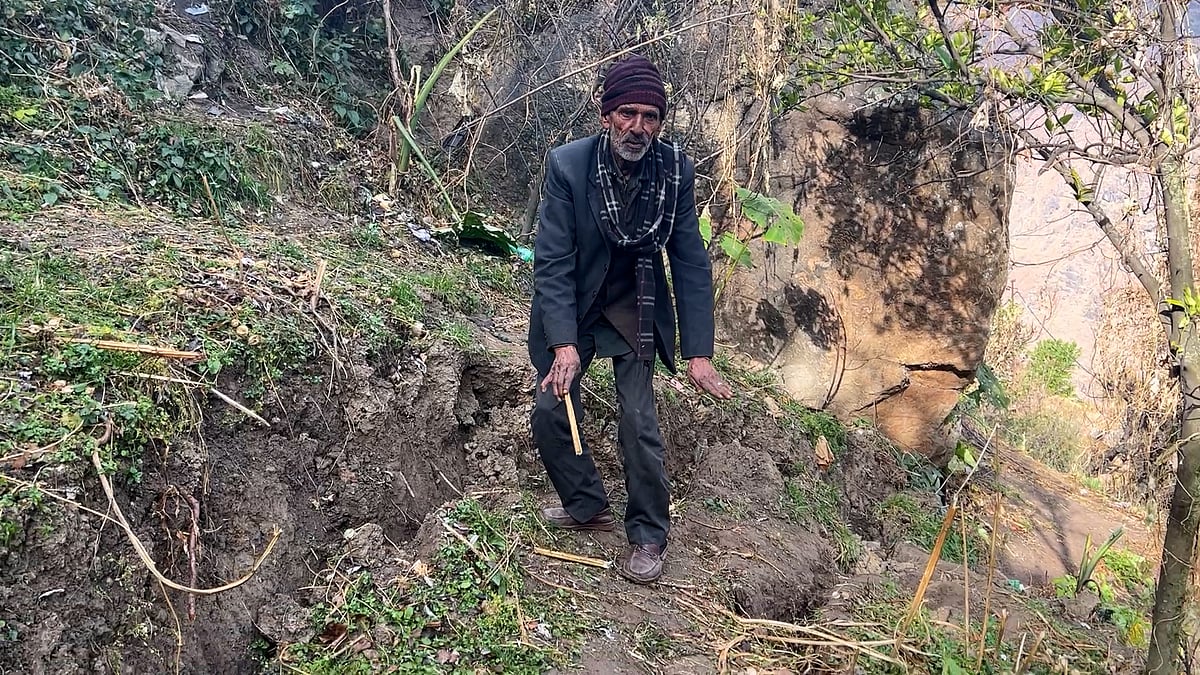Rejected at least 10 times by statutory bodies, the mega Hubballi-Ankola rail project has now ostensibly met the same fate at the hands of a seven-member inspection committee of the National Board for Wildlife.
The committee’s report suggested revisions to the project proposal, and it was discussed at the 71st meeting of the NBWL held on December 29 and chaired by Bhupender Yadav, union minister of environment, forest and climate change. At this meeting, several significant changes were suggested, including doubling of the railway line, hinting at the possibility of acquisition of more forest land.
However, the meeting decided that a workshop should be held for a detailed discussion by various stakeholders.
The Karnataka and central governments have been pushing for the 164-km broad gauge line project, which will cut through biodiversity hotspot Western Ghats, amid concerns about a significant ecological impact. The project, conceived in 1998 to chiefly transport iron ore to the west coast, will pass through three elephant and tiger corridors and two districts of Dharwad and Uttara Kannada. Inaugurated by then Prime Minister Atal Bihari Vajpayee in 1999, the rail line also involves diversion of 595 hectares of forest land – 42 ha from the Dharwad elephant corridor, 304.06 ha from Yellapura elephant corridor and 249.58 ha from Kanwar elephant corridor. The revised project cost has gone up over 10 times to Rs 3,749 crore and entails cutting of around 2 lakh trees.
According to the minutes of the last NBWL meeting, expert member HS Singh suggested that the railway line should be doubled. And if the Railways revises its proposal, it will have to look into the possibility of acquiring more forest land, said a railway official privy to the project.
In the original plan, the Railways proposed a single-track, broad gauge line. “Dr HS Singh, member, NBWL stated that the construction phase of the project would be 8 years….being a more suitable site, there would be demand for doubling of the railway line in the near future. Therefore, if approval has to be given, it should be for the doubling of railway line,” read the minutes of the meeting.
Earlier, a state wildlife expert had said that the construction would take 12-15 years.
The inspection committee, formed on June 3, 2022, said the project proposal should not be considered in its “present form” and asked the project proponent to address “gaps and deficiencies”.
During the NBWL meeting, expert member R Sukumar listed costs and benefits arising from this project. He said apart from the direct loss of “600 ha of forest land”, more than “1000 ha forest land will be affected by this project”. “It has got enormous implications for the overall integrity, biodiversity, animal passages of the Western Ghats which have to be addressed,” the elephant expert said in the meeting.
Listing the positives, he said the railway line can connect the central part of India with the western coast. “Taking everything into consideration, this project with 1:100 gradient can potentially become the major infrastructure for transport across the Western Ghats. The project may in fact be for double line,” he observed.
He asked the Railways to examine if more tunnels could be added to the project to minimise the project impact. He also said doubling of other proximate railway lines could be dropped as they pass through dense forests. In the previous NBWL meeting, he sought an integrated transport master plan steering clear of any piecemeal approach.
Suggesting a revision of the proposal, Singh also said it should mention longer and broader passages for animal movement across the tracks. “The railway line would cut across several roads connecting villages and there would be a need for temporary roads also. These additional structures have not been included in the proposal,” he said.
As per Bhupender Yadav’s suggestions, the MoEFCC has decided to hold a discussion with officials from Ministry of Railways, National Highways Authority of India, Gati Shakti, CPWD, Karnataka government officials, and experts from Indian Institute of Technology, Dharwad, and Indian Institute of Science, Bangalore.
This is not the first time that a committee has recommended rejection of the rail proposal in its current stage.
The 2018 NTCA report termed avoidance of the project as “the best mitigating measure” and said the fragile ecosystem of the Western Ghats, declared a world heritage site by Unesco in 2012, would not be able to sustain the impact. The NTCA also said that the project will impact the existing herbivores, tigers and elephants. “It also fragments the old migration path of India elephants. Out of the 6 tiger occupied landscapes of India, currently the Western Ghats landscape possesses best habitat connectivity and contiguity,” NTCA said.
The proposal has undergone several changes in the last quarter of a century. The required forest area was reduced from 965 ha to 683 ha in 2008, and again to the current level of 595 ha in 2016. Documents submitted with MoEFCC show that the number of proposed tunnels has been increased from 25 to 31 over a length of 27 km.
In its justification for the project, theRailways said the new line will increase carrying capacity of iron ore from the Hospet-Bellary area. “Iron ore for export from this area is moved through three ports, viz. Chennai, Goa (Murmagoa) and Mangalore. Hospet–Vasco (rail) section has been converted into Broad Gauge and the current level of traffic is almost 8–10 million tonnes per annum. However, potential traffic in the future towards the west coast is of the order of 20–30 million tonnes per annum,” it said, adding that once the project is operational, steel industries “like JVSL, Bellary Steels, Mukund Iron, Kirloskar etc.” will be able to import coal. It asserted that the line “has to pass through” the forest area as “80 percent of Uttara Kannada district lies in the forest area”.

 Projects worth over Rs 12,000 crore: Joshimath’s journey from ‘development’ to disaster
Projects worth over Rs 12,000 crore: Joshimath’s journey from ‘development’ to disaster